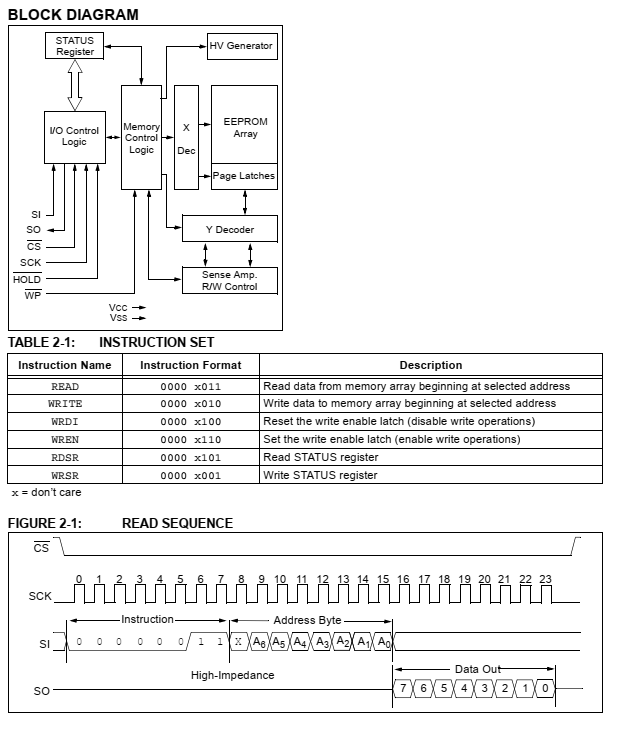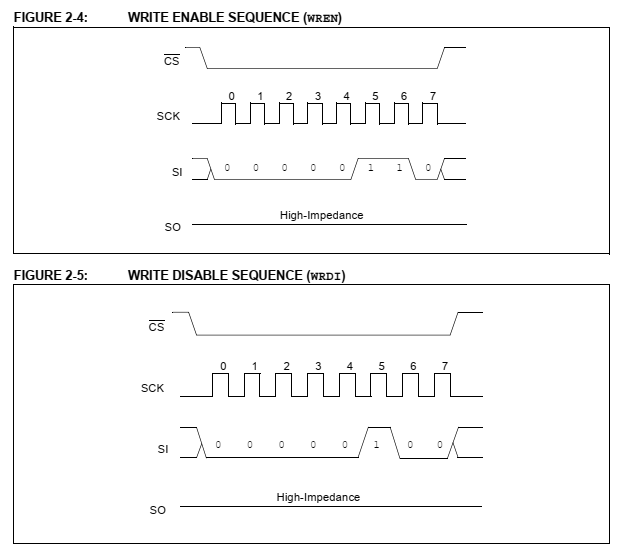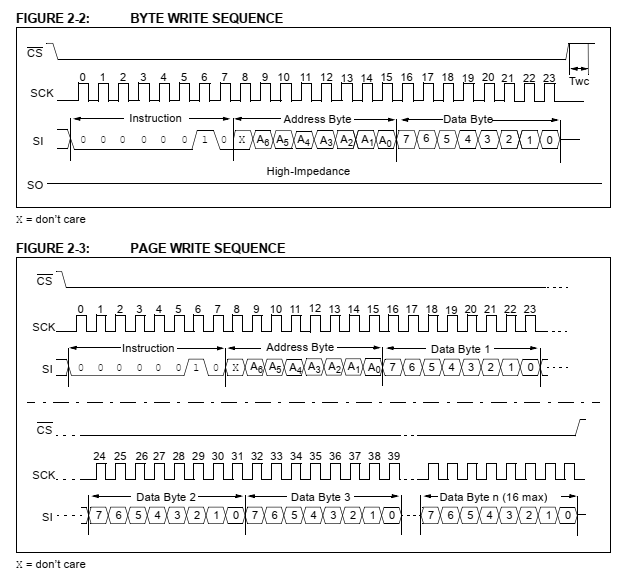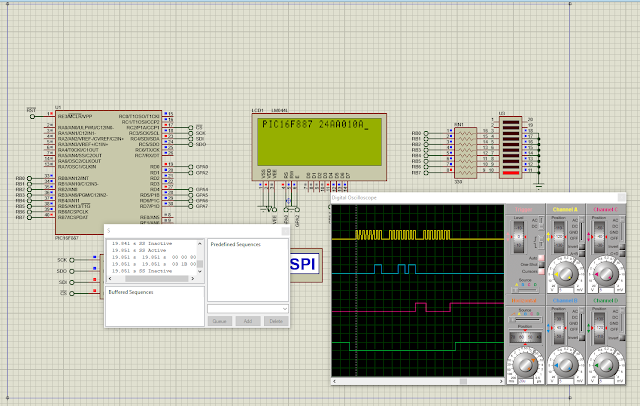Overview
The 25AA010A is 1Kbit SPI bus serial EEPROM. It could handle up to 10MHz clock frequency with a high endurance of 1M erase/write cycles. Its memory space is organized into 128x8-bit.
 |
| Simulating Program in Proteus |
It has various device's package including a DIP-8 package for hobbyists prototyping.
 |
| Device Selection Table |
I don't have a physical device of this chip. So I just take a model of this chip to simulate in Proteus.
 |
| Package Types and Pin Function Table |
The SPI transfer and receive must have the following data bytes, instruction, address, and data.
 |
| Block Diagram, Instructions, and SPI Read Sequence |
The read command is 0x03 follows by the EEPROM address. The EEPROM 8-bit data will shift out by the SPI read routine issued by the microprocessor.
Writing data to the EEPROM requires around 5ms. It requires a write enable instruction before the data writing sequence able to process.
 |
| Write Enable and Disable Commands |
Write-enable command is 0x06 while the Write-disable command is 0x04. Additionally the Write Protect (WP) pin must pull high to enable data writing.
Byte write sequence instruction is 0x02 follows by the EEPROM address and the 8-bit data. It also has a page write sequence to write a burst of 16 bytes data package. The microprocessor needs to wait around 5ms to complete data writing.
 |
| Byte and Page Write Sequences |
The Read Status Register Instruction is optional you can read the device datasheet for more detail.
PIC16F887 MPLABX IDE and XC8 Programming
I use a PIC16F887 micro-controller from Microchip Technology. It has the SPI module inside along with the I2C module. The XC8 C compiler is free to use without registering or buy a software license.
 |
| Screen Shot of This Example Program |
In this example, the microprocessor write and read the EEPROM data from this SPI chip. It will show on a 20x2 character LCD and PORTB of PIC16F887 micro-controller.
I wrote an SPI driver that it's putted in one package.
The SPI.h header file:
The SPI.c source file:
If you wonder about using the SPI communication interface of PIC16F887 you can see this post.
See Also:
- PIC16F887 Serial Peripheral Interface Example
- PIC16F887 SPI and MCP23S17 XC8 Example
- PIC16F887 SPI MCP23S17 and Character LCD XC8 Example
- PIC16F887 SPI MCP23S17 Character LCD and KeyPad XC8 Example
- PIC16F887 SPI SN74HC165 LCD XC8 Example
Click here to download this example from GitHub.
No comments:
Post a Comment